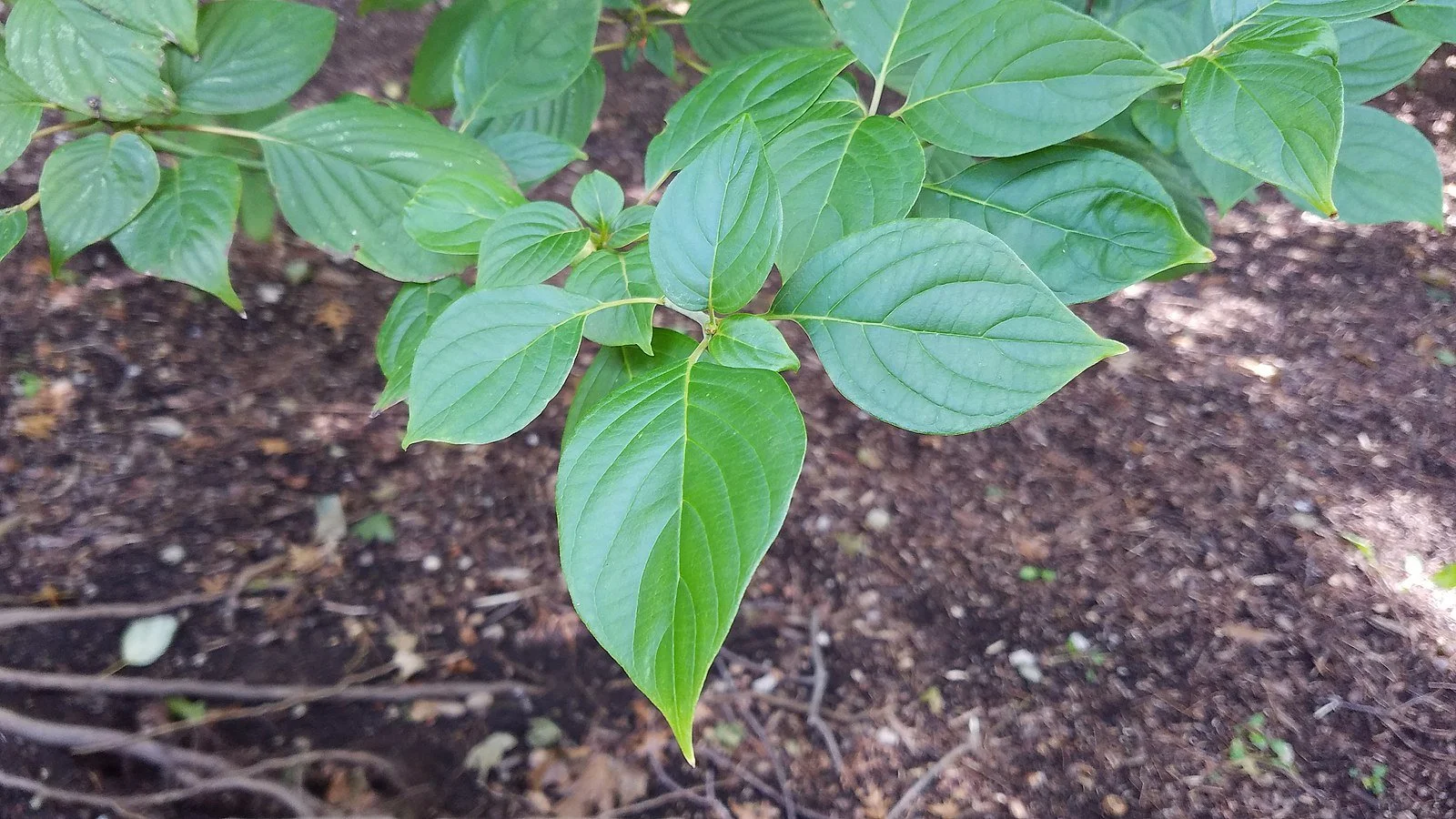Cornus alternifolia
Cornus alternifolia, also known as alternate-leaved dogwood or pagoda dogwood, is a deciduous shrub or small tree native to eastern North America. It is known for its unique growth habit and attractive foliage, making it a popular choice for use in landscaping.
The growth habit is distinctive, with a layered branching pattern that gives the plant a tiered or pagoda-like appearance. The plant is upright in shape and can form a single stem or multiple trunks. It typically grows to a height of 15-25 feet (4.6-7.6 meters) and a width of 10-15 feet (3.1-4.6 meters).
The foliage is deciduous and is arranged alternately on the stem, where the plant gets its common name. The leaves are glossy and dark green, with a pointed tip and a slightly serrated edge. They are typically 2-4 inches (5-10 centimeters) long and 1-2 inches (2.5-5 centimeters) wide.
The flowers are small and inconspicuous, typically white or pink. They are arranged in clusters and bloom in late spring. The plant produces small, blue-black berries attractive to birds and other wildlife. The berries are edible but not commonly consumed by humans.
The native range of this tree is from eastern Canada to the eastern United States, including New York, Michigan, and Georgia. The plant is hardy in USDA hardiness zones 3-7.
The pagoda dogwood is utilized in landscaping, particularly as a specimen plant or in mixed borders. It is also used for naturalizing and as a hedge or screen. The plant is disease resistant and tolerant of various soil conditions. It is also suitable for use under power lines due to its ability to tolerate pruning and moderate size.
There are several cultivars of Cornus alternifolia available in the trade, including ‘Argentea’ (silver-variegated foliage), ‘Golden Shadows’ (yellow-variegated foliage), and ‘Siberica’ (larger leaves and a more upright habit). These cultivars were introduced to the trade by various individuals, including plant breeder Dr. Michael Dirr and nurseryman J.C. Raulston.
Other plants that are similar in characteristics, size, and habit to Cornus alternifolia include Cercis canadensis (eastern redbud), Amelanchier arborea (downy serviceberry), and Viburnum trilobum (American cranberry bush).
References:
Dirr, M. (2010). Manual of Woody Landscape Plants: Their Identification, Ornamental Characteristics, Culture, Propagation, and Uses. Champaign, IL: Stipes Publishing LLC.

